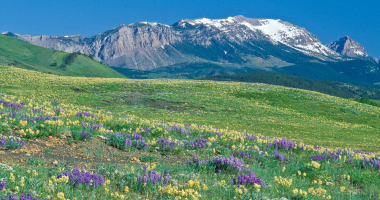On Birding: Our Public Lands Remain At Risk

The many values of our public lands are revisited in January’s On Birding column. Click here to read in the Helena Independent Record.
On Birding: Refuge
By David Cronenwett
The most important character in the long story of the American West has always been the landscape itself. Though human beings have played a significant role here since the last ice age, there is still a powerful sense, particularly in Montana, that the elemental forces and natural beauty of the place somehow outweigh the influence of people. Much of this feeling is derived from the ability to physically experience mountains, forests, prairies and rivers intimately and more or less how we choose. The conservation movement in the United States began in earnest well over a century ago, fueled by two groups of individuals passionate about wildlife and the landscapes they inhabit. It was hunting and birding organizations, outraged by unregulated pillage of wildlife and other natural resources that galvanized the idea of conserving species as well as places where human beings can enjoy nature on its own terms.
Lands began to be set aside for conservation in the West, like Yellowstone in 1872 and as subsequent “Forest Reserves” and game sanctuaries followed, a Public Commons emerged as the physical manifestation of America’s most important and egalitarian concepts. A system of vast public holdings became powerfully representative of personal freedom, wildness, sustainable use, conservation, natural beauty and more. This era, in the late 19th and early 20th centuries, saw the creation of the first national parks, national forests, grasslands, monuments and national wildlife refuges.
For many Montanans, outdoor pursuits rank as among the most important reasons for living, and it should be remembered that much of our ability to partake in that life is due in large part to an abundance of federally-owned and managed, public lands. In addition to providing critical “ecosystem services” like clean water and diverse habitat for wildlife, these landscapes offer a multitude of outdoor experiences for all American citizens regardless of socioeconomic background. It is impossible for me to conceive of a Montana without that vast public estate of mountain woods, grass and waters to get lost in. We must always remember that in addition to the conservation of native flora and fauna, these national lands provide a lasting refuge for our souls.
Alas, there are misguided individuals in the world who would see to it that this inheritance is undone. While conflicts will always exist between the public and the government as how to best manage national lands, a seditious, armed takeover is not a productive way to resolve problems. The current standoff at Malheur National Wildlife Refuge in Oregon is a criminal act aimed, according to the militia occupying its headquarters, at turning the nearly 190-thousand acre refuge and nearby 1.4 million-acre Malheur National Forest over to county control. Collaborative efforts between local communities and federal agencies to find solutions to complex land management issues occur throughout the West, including at Malheur, but seem to have no meaning to Ammon Bundy and his followers. Their way is to sidestep compromise or reform and head straight for armed insurrection.
However this circus ends, its perpetrators, who have demonstrated no regard for the rule of law or the value of our public estate, must be held accountable for their actions. Still, even as the Oregon standoff has dominated the media, the more quiet and sinister threat to our legacy of public lands goes largely unreported.
The “divestiture movement” which aspires to transfer millions of acres of federal land to state or county control, has unfortunately been gaining political traction. In recent years, many bills have been introduced in the legislatures of Western states calling for some implementation of this dark vision, ostensibly it seems, to promote local economic development. Various groups and individuals are pushing this agenda, which gravely threaten landscapes that we Montanans love, work and recreate in. Many of these places form the background of our lives and are viewed from our windows on a daily basis. Neither counties nor states have the capacity to manage millions of acres of mountain, forest and grass or the natural resources they support. The selling of these lands to offset the cost of their management, is rightly cited as an inevitable consequence of divestiture by public lands supporters.
Poll after poll, including the recent “Conservation in the West” paper, published by Colorado College, demonstrate strong popular support for maintaining federal ownership and management of public lands; this study showed 59% of Montanans polled opposed any land transfer. Yet there remain legislators, industry groups, wealthy individuals and in the Malheur case, unbalanced and armed fanatics who continue to call for a wholesale disposal of federal lands. It starts to look more like a handout and tragic giveaway when all the implications are considered.
If you cherish national public lands, let your legislators know; hunters, birders, walkers and outdoor enthusiasts of all stripe should do so. And we should each be ready to rally support for our favorite piece of ground and the larger Public Commons, a spiritual refuge for many, when the time comes and as many times as it takes.